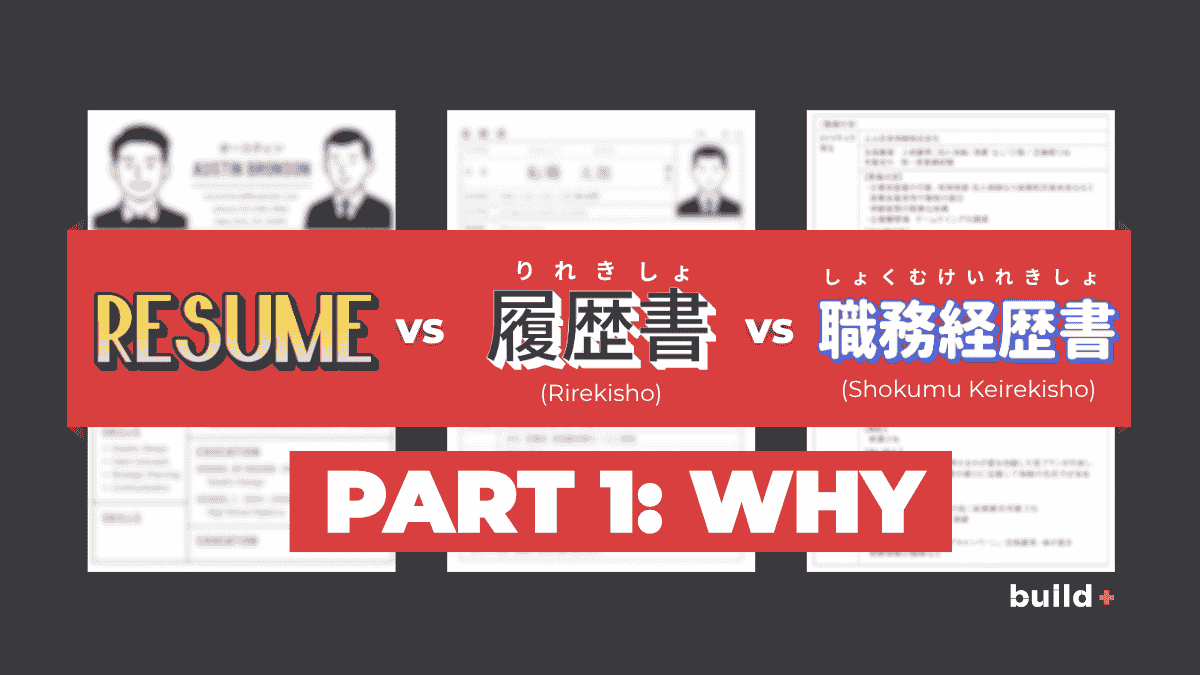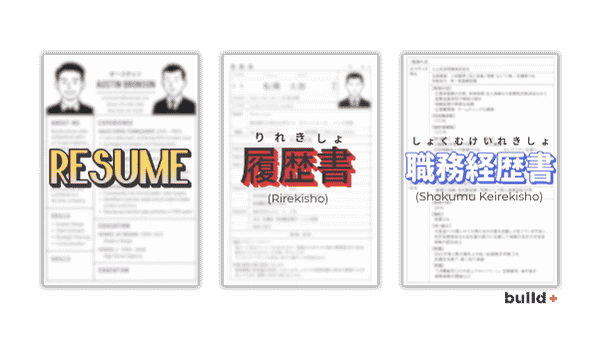How to Compose 履歴書 (Rirekisho)・職務経歴書 (Shokumu Keirekisho) - Part 1: WHY
Key Takeaways
When applying to a Nikkei company (日系企業), you’ll need two documents: a 履歴書 (Rirekisho) and a 職務経歴書 (Shokumu Keirekisho).
This blog dives into the “why” behind these formats. A follow-up blog will guide you through the “how.”
Nikkei companies are looking to sustain an ecosystem.
Think of it like this: international companies are bidding on diamonds. Nikkei companies are mining diamond ore to polish and shape.
The 職務経歴書 (Shokumu Keirekisho) focuses more on your operational experience, while the 履歴書(Rirekisho) gives you space to express personality.
Part 1: The “Why”
What’s your favorite thing about Japan?
The mechanics? Sushi? Anime?
There's so much to love.
Imagine starting a brand new chapter right here on this island.
This blog will be a tiny but mighty ally on your journey.
Here’s something you might not know: Nikkei companies don’t accept CVs.
Instead, they ask for 履歴書(Rirekisho) and 職務経歴書(Shokumu Keirekisho).
I know what you are thinking:
“Two?! So tedious. Classic Japan…”
I hear you.
This time, let’s tone it down.
Grab a cup of something warm, and let’s look into why these documents matter so much.
(The “how-to” is coming up in the next blog. Promise.)
Shall we move on? I’ll put the kettle on.
What’s the Backdrop?
Got your mug? Good. Let’s dig in.
At the core, it all comes down to different goals in the hiring process:
Personality-dominant vs Professionalism-dominant.
Nikkei companies lean toward the former.
To them, a company is a community.
A chain of human interactions.
Harmony is key.
They want to know if you fit their ecosystem.
Before we dive into each document, let’s explore two key influences in Japanese hiring:
2 Key Influences in Japan
1. Cultural Tendencies in Japan
Think: group-oriented, consensus-based, relationship-driven, non-confrontational, past-focused, hierarchical, and high-context.
Sound familiar? Surprising? Comforting? Each company lives this to a different degree, but these tendencies shape the expectations at every company.
2. Employment Practices: 青田買い(Aota Gai) & 終身雇用 (Shushin Koyou)
Ever heard of Aota Gai (青田買い) or Shushin Koyou (終身雇用)?
These are traditional hiring concepts in Japan:
青田買い(Aota Gai) – hiring fresh grads early, even before graduation.
終身雇用(Shushin Koyou) – lifetime employment.
In contrast to global companies that recruit at all stages, Nikkei firms focus on training and growing talent in-house.
A hire is a long-term investment, not a quick fix.
The two-document format is part of that philosophy:
It helps gauge both your technical foundation and your cultural fit.
That said, things are changing.
The rise of 第二新卒 (Dainishinsotsu, early-career job changes) and general 転職 (Tenshoku, job change) suggest lifetime employment is no longer the gold standard.
Change is coming, and fast. (Stay tuned for more on that in another blog.)
For now, let’s break down what these two documents are really for.
Resume vs 履歴書(Rirekisho) vs 職務経歴書(Shokumu Keirekisho)
OK, you get it.
But, what do these documents actually do?
Let’s simplify:
CV (used globally): All about skills. Show what you can do and how you can win.
履歴書(Rirekisho): More about who you are. The basics—education, background, personality.
職務経歴書(Shokumu Keirekisho): A deeper dive into your career, much like a CV, but adapted to Japanese expectations.
A Simple Analogy:
International companies:
Looking for diamonds. Show your brilliance, outshine the others.
Nikkei companies:
Looking for diamond ore. They’ll polish you. But first, they want to know if you're the right kind of stone.
How to Pitch Yourself for Nikkei Roles
This is where your approach matters.
In a CV, you might laser-focus on achievements.
In a 履歴書(Rirekisho), you show your foundation—educational background, certifications, and personal traits.
In a 職務経歴書(Shokumu Keirekisho), you connect your work experience to the role, while also hinting at your attitude and compatibility.
Ask yourself:
Have you read up on the company?
Can you express not only what you’ve done, but who you are?
Are you ready to show up (on paper) with both confidence and humility?
If not, that’s okay. Consider this your Masara Town(Pallet Town). A starting point.
Wrap-Up
Thanks for sticking with me to the end of the beginning of your Japan career journey.
Here’s the recap:
Nikkei companies = long-term community building.
International companies = fast-track hiring.
That means your application approach must change accordingly:
| Company Type | Focus | Application Focus |
|---|---|---|
| International | Performance & Output | Strong CV, highlight top achievements |
| Nikkei | Harmony & Potential | Dual documents: skill + culture alignment |
Looking Forward
Our next blog will take you further into the nuts and bolts of writing your 履歴書(Rirekisho) and 職務経歴書(Shokumu Keirekisho).
You’ll learn what to include, how to format it, and what makes your application stand out.
Until then. take care, and happy job hunting.
Looking forward to seeing you again.



